- Home
- slideshows
- miscellaneous
- NASA's $1 billion Jupiter probe just beamed back even more jaw-dropping photos of the planet's tireless storm clouds
NASA's $1 billion Jupiter probe just beamed back even more jaw-dropping photos of the planet's tireless storm clouds
Juno begins a perijove by accelerating over Jupiter's north pole.

The maneuver takes a couple of hours, and scientists are mainly interested in gathering magnetic, radio, radiation, and gravitational readings. But NASA added a camera to capture Jupiter in a sequence of images.
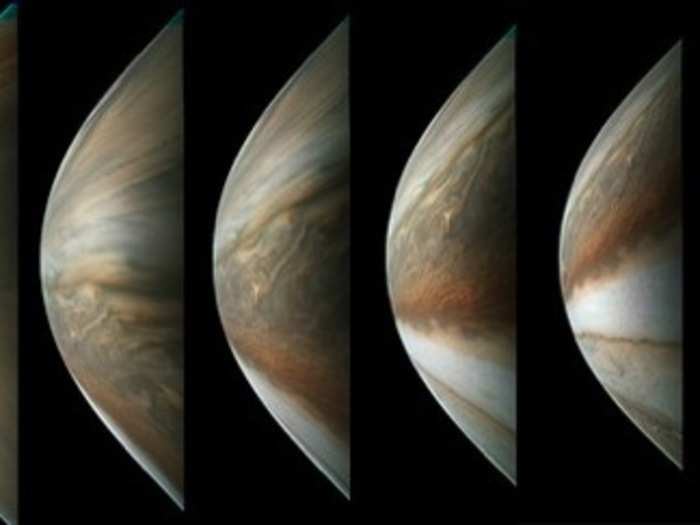
Once the data gets to Earth, artists download and process it. Some stitch and wrap the flat images onto 3D models to make them look as if you were right there.
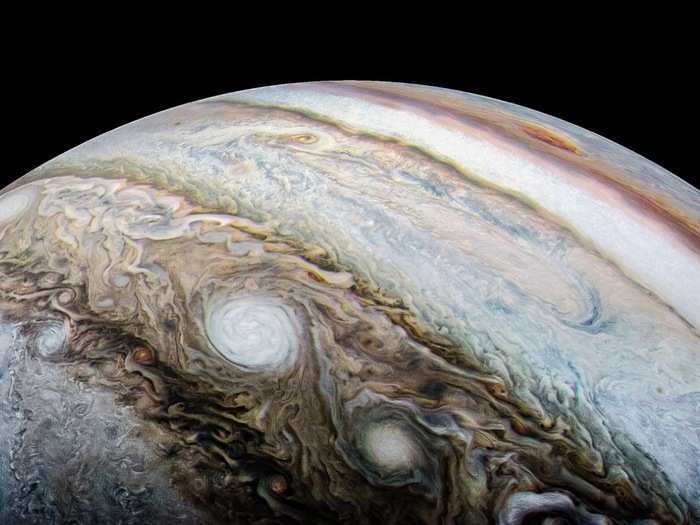
Jupiter's cloud tops are somewhat hazy, but a boost in contrast can bring out bewildering formations.
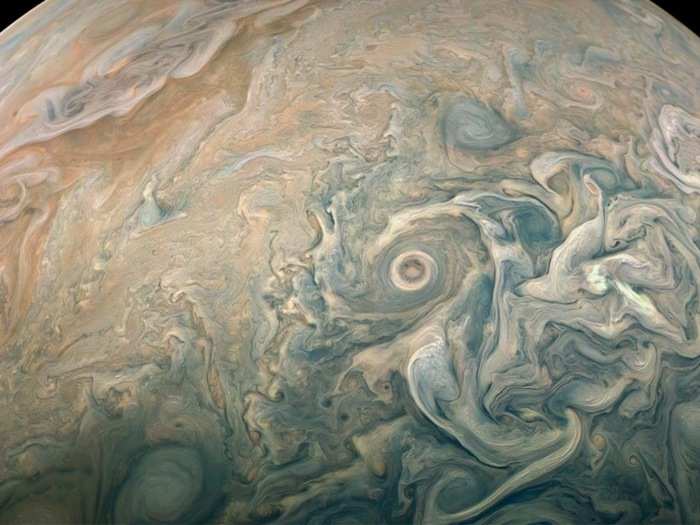
This close-up shows a cyclonic storm that's many times larger than the biggest hurricanes on Earth.
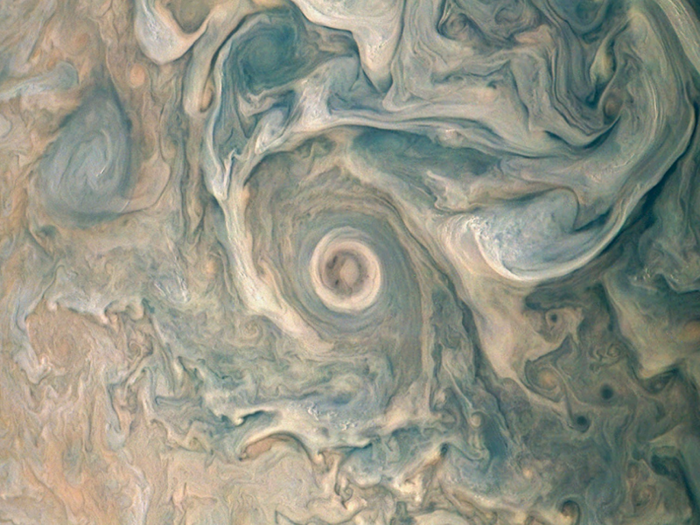
Increasing the color saturation of Juno images also brings out the wide variety of colors lurking in its hydrogen- and helium-rich cloud tops that are peppered with other compounds, including ammonia.
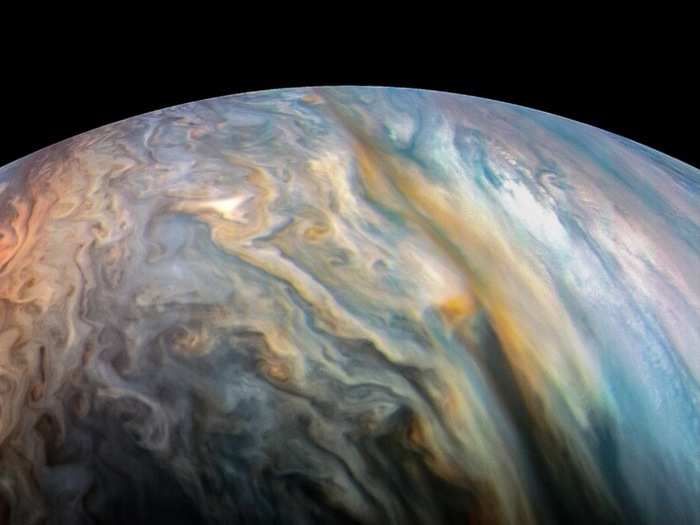
Some storm clouds pile into bands that circle much of Jupiter — a planet more than 300 times as massive and more than 1,300 times as voluminous as Earth.
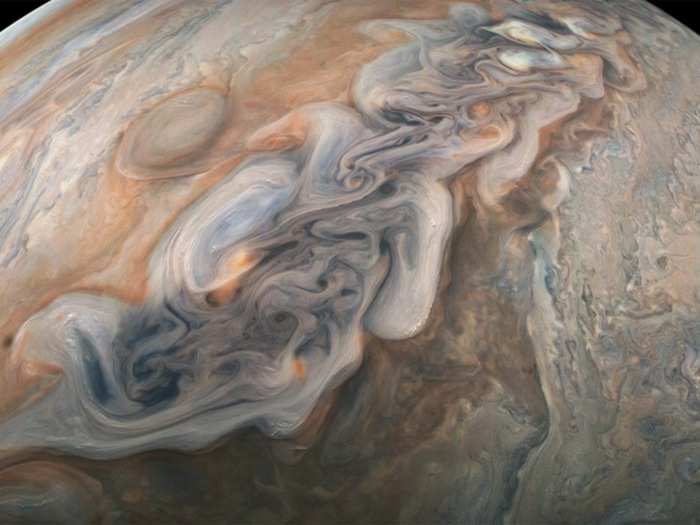
This chaotic strip of storms (from the previous image) is punching into adjacent cloud bands. By the time of Juno's next pass in July, it will almost certainly have morphed and changed.
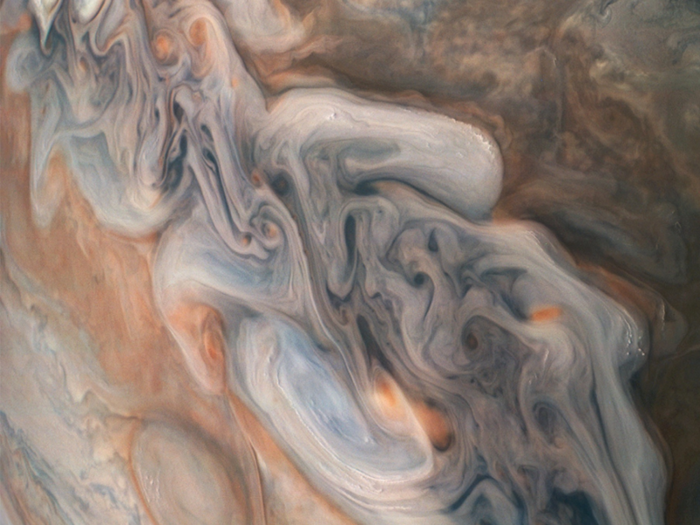
Color-processing often gives messes of storms found near Jupiter's poles a vivid blue hue.
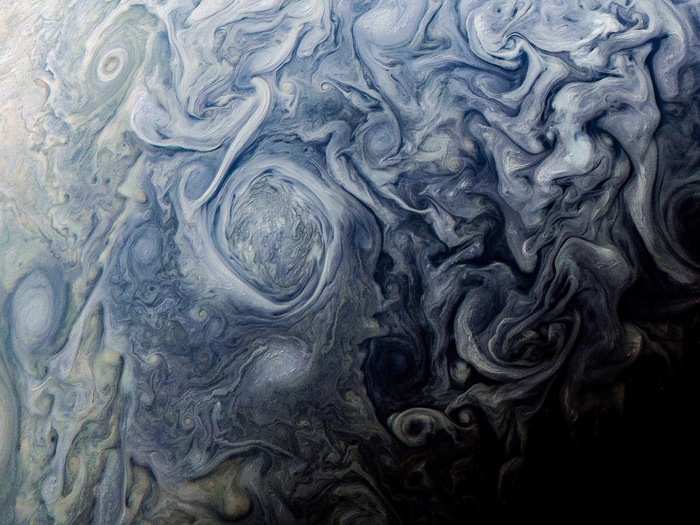
Source: Business Insider
Juno's mission at Jupiter is up for renewal through July 2021, but it won't last forever. NASA is concerned leaving it in orbit too long could make it crash into and contaminate icy moons like Europa.
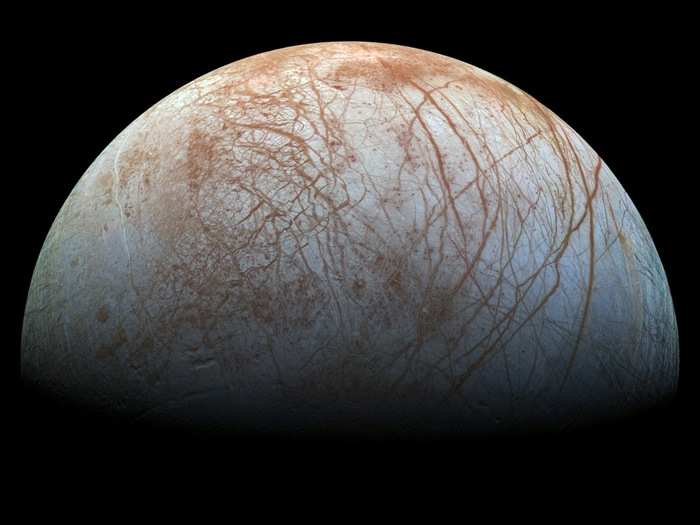
Source: Business Insider
Europa is thought to have a hidden, 2.6-zettaliter ocean. That's twice as much liquid water as Earth has.
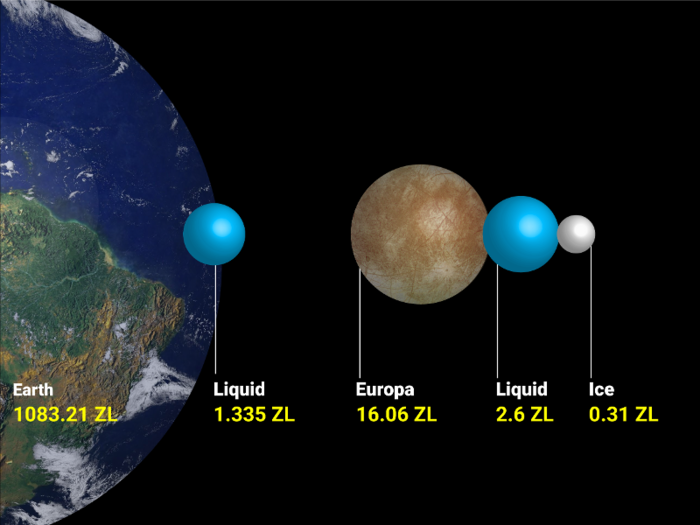
Source: Business Insider
Europa is spraying its salty ocean water out into space through cracks or geysers.
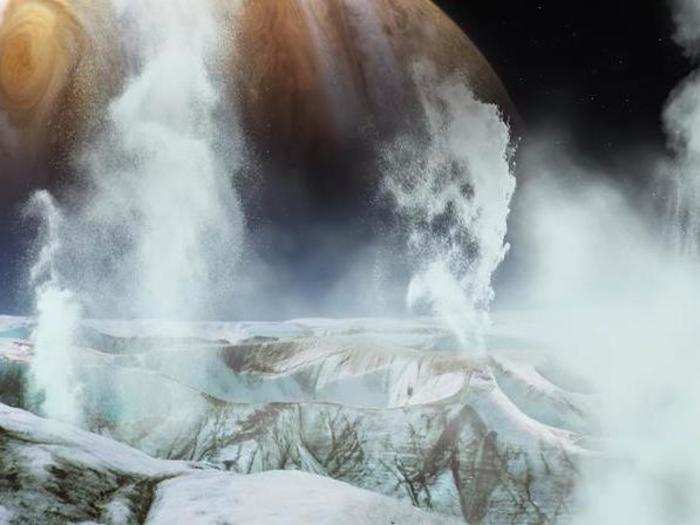
Source: Business Insider
Scientists think the enormous ocean might be habitable to alien life, so NASA plans to fly its upcoming $2-billion Europa Clipper mission through the moon's water plumes and "taste" them.
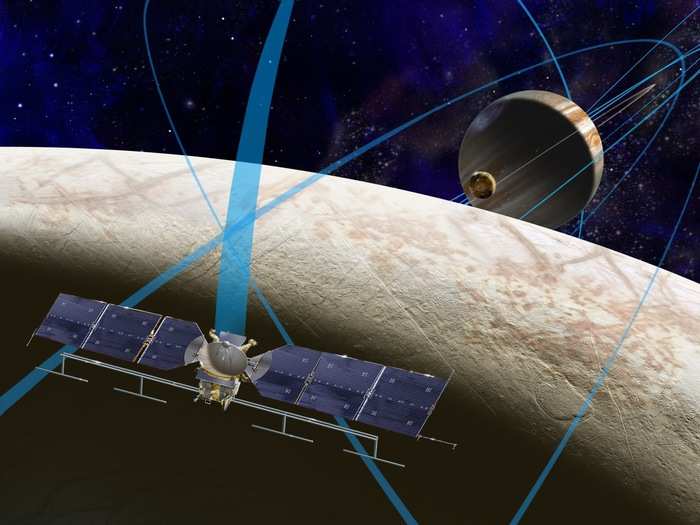
Source: Business Insider
Ultimately, researchers hope to send a small, nuclear-powered submarine probe beneath the ice to explore Europa's mysterious ocean.
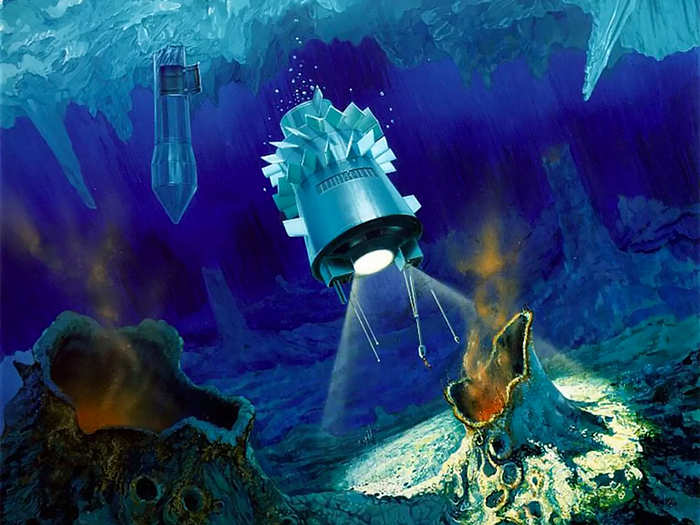
Source: Business Insider
Popular Right Now
Advertisement